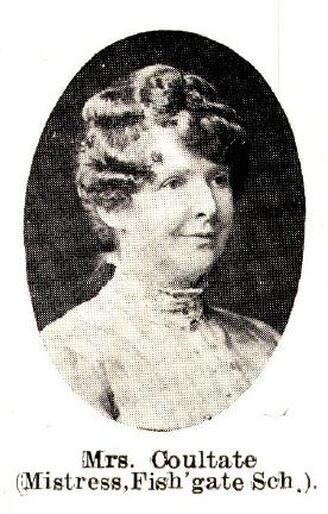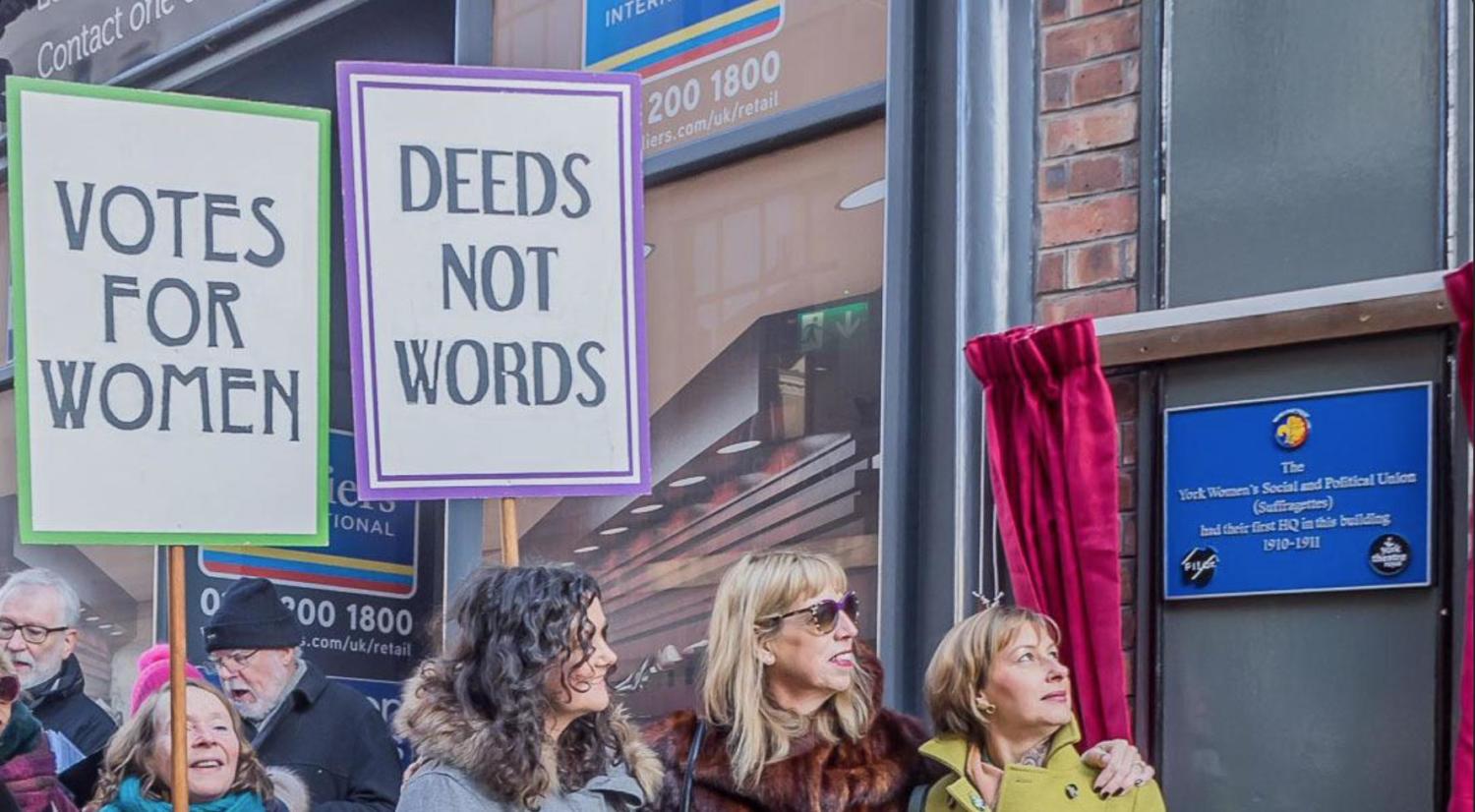Photo credit: Karen Boyes

Later on this month, millions of people around the world and thousands right here in our city, will be celebrating International Women’s Day; where they’ll champion the progress made towards gender equality throughout the last 100-years or so, and highlight the work that still needs to be done to ensure that the progress never stops.
There’s no better place to start than the address on Coney Street that inspired the headline to this column. Now home to The Entertainer, and nestled between a bubble tea cafe and a bar, in the early 20th century (as the blue plaque in the image indicates), 36 Coney Street was the place where York’s Women’s Social and Political Union or WSPU met — there they would write letters, plan demonstrations and organise petitions, and work out fundraising initiatives. They also distributed radical newspapers like the infamous “Suffragette.”
Over the past century there has been nothing so important in the progression of women’s rights than “The Representation of the People Act 1918” — which led to the achievement of equal voting rights for women. It meant that for the first time in the history of our country, women were able to have a say on the decisions made by their government. The first woman to vote in York was Sarah Booth of 134 Haxby Road. When we look back at this significant moment, the most important thing to remember is that it would not have been possible without an inspirational level of female-led activism, some of which was peaceful, some of which was not, but all of which was justified.
The York we live in today — that is led by a female Member of Parliament in Rachael Maskell and a female council leader in Claire Douglas — would not be the tolerant and inclusive city that it is, if so many past residents had not stood up and fought for their basic human rights. So, let’s delve into a few of the historical characters, events, and places that were significant in that struggle.
The story in York really begins in June 1908, when a real legend of the women’s suffrage movement came to York. Emmeline Pankhurst addressed meetings in the De Grey Rooms and in the open air in Exhibition Square in York. She attempted to lobby women workers at Rowntree’s Cocoa Works during their lunch hour, trying to drum up support for a demonstration in Hyde Park, London.
We don’t know how many women from York travelled to London, but what we do know for sure is that Ms Pankhurst inspired enough local women to the cause that in 1910 a WSPU was set up in York. The first leader was Annie Coultate, who worked at Fishergate School.
Annie Coultate’s name is one we should remember because of the leading role she played in one of the largest acts of defiance the city had ever seen — an evasion of the 1911 Census. She hid from census officers throughout 1911, an act that essentially said to the government “if you refuse to acknowledge my rights, I refuse to be tallied up as part of your society.”

Two years later York’s activists stepped things up a notch. In January 1913, Annie Seymour Pearson of Heworth Green travelled to London to take part in a demonstration. While in the big smoke, Annie was arrested, found guilty of obstructing the police and was sent to Holloway prison where she stayed for the two days it took for her husband to pay the fine. The escapade makes her the only York suffragette to obtain a criminal record.
A day later, letter bombs, said to have been addressed to Prime Minister H.H. Asquith, were posted in pillar boxes at Castle Mills Bridge and in Wigginton Road, Parliament Street and Balmoral Terrace! Although they never made their way to 10 Downing Street, one did go off in the Post Office sorting office, which set fire to a number of other letters and burned the hands of two postal workers.
Finally some years later and in the spirit of unity fostered by the events of the First World War, the new Liberal Prime Minster, David Lloyd-George agreed to bring forward “The Representation of the People Act 1918” that gave women over the age of 30 who owned a certain amount of property, voting rights. Finally in 1928 another bill was passed, the “Equal Franchise Act 1928.” This extended those rights to all women over the age of 21 which was the exact same qualification for voting that
men had.
This has been enshrined in our law ever since, and is the legacy of women like Annie Coultate and Annie Seymour Pearson who spent hours sat in the room above Coney Street planning how to shift opinions and perceptions across York — so that no one would ever consider depriving half our population of their voting rights ever again.
While nearly 100-years have passed since all women in the UK won those rights,
this doesn’t mean the struggle for equality is complete. Far from it, in fact last year the Office for National Statistics found that on average, women were payed at least 7% less than their male counterparts. If you’d like to learn more about how to help make a difference in our community, then make sure to attend York International Women’s Week which takes place later this month. More information is available on the next page.
Names, dates, and other historical information was sourced from the York Civic Trust’s website. Head to www.yorkcivictrust.co.uk to learn more.









Add a comment